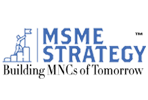Mastering Fixed Assets Accounting: A Guide for SMEs
Fixed assets are the backbone of any enterprise, holding intrinsic value that defines a company’s real wealth. In fact, as of 2023, around 45% of small and medium sized enterprises (SMEs) across the globe have over 50% of their balance sheets tied up in fixed assets. Managing these assets efficiently can enhance a business’s growth, stability, and overall value, but many SMEs struggle with fixed assets accounting. This article offers a detailed look at fixed assets, from their characteristics to their advantages, disadvantages, and strategic considerations. Let’s equip your business with the knowledge to make informed asset decisions.
Understanding Fixed Assets: What Are They?
In accounting, fixed assets are tangible items owned by an organization with the intention of generating long-term economic benefits. Fixed assets, recorded under property, plant, and equipment (PP&E) on a balance sheet, include items like machinery, computers, vehicles, and buildings. Here are some defining characteristics of fixed assets:
- Tangibility: Most fixed assets are tangible, meaning they have a physical presence. However, some long-term intangible assets, such as certain leases, may also be treated as fixed assets.
- Longevity: These assets typically provide utility for several years, with depreciation spread across their useful life.
- Liquidity: Fixed assets are less liquid than current assets like cash or receivables; they’re not easily converted into cash and are primarily for operational use.
- Purpose: Their main role is to support business operations rather than be sold as products or held for short-term investment gains.
- Capitalization and Depreciation: Fixed assets are capitalized on acquisition and gradually depreciate, reflecting a decrease in value over time.
Examples of Fixed Assets
To understand the range of fixed assets an SME might possess, here are some common categories:
Land: Real estate for business use, such as office buildings, farms, or factories.
Machinery and Equipment: Essential for production or operations, like manufacturing tools or diagnostic devices.
Buildings: Owned spaces like warehouses or retail outlets.
Vehicles: Company owned transportation vehicles used for business activities.
Office Furniture and Fixtures: Items like desks, shelves, or partitions used in day-to-day business.
Computers and IT Hardware: Hardware such as computers, servers, and other tech-related assets.
Specialized Tools: Industry specific tools, whether for medical, construction, or manufacturing needs.
Advantages of Fixed Assets for SMEs
Fixed assets are invaluable to SMEs due to the unique advantages they offer, which include:
- Financing Collateral: Fixed assets can be used as collateral to secure loans, enhancing access to capital for expansion or emergencies.
- Tax Deductions: Depreciation of assets provides a tax benefit by reducing taxable income.
- Appreciation Potential: Some assets, particularly real estate, may appreciate over-time, adding long-term value to the business.
- Competitive Advantage: Investing in modern assets, like updated machinery, helps improve efficiency and product quality, making the business more competitive.
Disadvantages of Fixed Assets for SMEs
While beneficial, fixed assets also pose some challenges:
- High Initial Costs: Purchasing fixed assets often involves large capital expenditure, impacting cash flow.
- Maintenance and Obsolescence: Regular upkeep and risk of technological obsolescence require ongoing investment.
- Storage Requirements: Some assets are bulky and require dedicated space, incurring additional costs.
- Limited Liquidity: The illiquid nature of fixed assets makes it difficult to liquidate them quickly in times of need.
Common Challenges in Fixed Assets Accounting for SMEs
For SMEs, tracking, managing, and valuing fixed assets can come with unique challenges. Some common issues include:
High Initial Investment: Fixed assets often require a substantial upfront cost, which can strain cash flow for small businesses.
Depreciation Complexity: Calculating depreciation and keeping it accurate over the asset’s useful life can be challenging without the right tools.
Maintenance and Obsolescence: Managing routine maintenance and dealing with technological obsolescence can eat into profits.
Illiquidity: Unlike cash, fixed assets are harder to convert into liquid funds in times of financial need, limiting flexibility for SMEs.
Compliance and Taxation: Incorrectly handling assets can lead to issues in tax reporting and compliance, exposing SMEs to financial penalties.
These obstacles highlight the need for SMEs to have a strong understanding of fixed assets and effective strategies for managing them.
When to Acquire or Offload Fixed Assets
Determining the ideal level of fixed assets depends on your SME’s goals, industry, and financial status.
When to Invest: If your business is growing, requires specific equipment to boost productivity, or has sufficient cash flow, acquiring fixed assets can be beneficial. Investing in assets often makes sense for industries with high infrastructure needs, such as manufacturing, logistics, or agriculture.
When to Offload: If assets are outdated or underused, or if maintenance costs outweigh the benefits, it might be best to sell them. Switching to a lease model for certain equipment can free up capital and reduce maintenance obligations.
Managing Depreciation and Capitalization
Depreciation reflects an asset’s decrease in value over time, affecting financial reporting and tax obligations. For example, a £10,000 machine with a 10-year lifespan would depreciate by £1,000 annually on the balance sheet. For fixed assets like machinery or vehicles, depreciation is a noncash expense that ultimately benefits the company by reducing taxable income.
Capitalization, on the other hand, is the process of recording an asset on the balance sheet instead of expensing it immediately. This allows businesses to gradually expense the asset over time, showing a clearer picture of profitability.
Leveraging Technology for Better Fixed Asset Management
Technology enables SMEs to manage fixed assets with greater precision and insight. Tools like asset tracking software, predictive maintenance technology, and cloud-based accounting systems are invaluable. These solutions allow real-time tracking, maintenance scheduling, and comprehensive financial reporting.
Actionable Tips for SMEs on Fixed Asset Management
- Conduct Regular Audits: Review asset condition and usage periodically to identify underutilized or inefficient assets.
- Use Asset Tracking Software: Invest in digital tools to streamline tracking, maintenance scheduling, and depreciation calculations.
- Optimize Depreciation Methods: Choose a depreciation method aligned with asset usage patterns for better accuracy and tax planning.
- Review Financing Options: Consider asset-based financing if you need to raise funds without disrupting cash flow.
- Plan for Disposal: Regularly assess when to replace, sell, or dispose of assets to prevent high maintenance costs on outdated equipment.
How MSME Strategy Consultants Can Assist
For SMEs looking to enhance their fixed asset strategy, MSME Strategy Consultants (msmestrategy.com) offer expert guidance on asset acquisition, management, and optimisation. Their seasoned consultants help SMEs develop tailored asset strategies to drive growth and improve financial stability.
#FixedAssets #SMEFinance #AssetManagement #SMEstrategy #BusinessGrowth #AccountingBestPractices #MSMEStrategy






